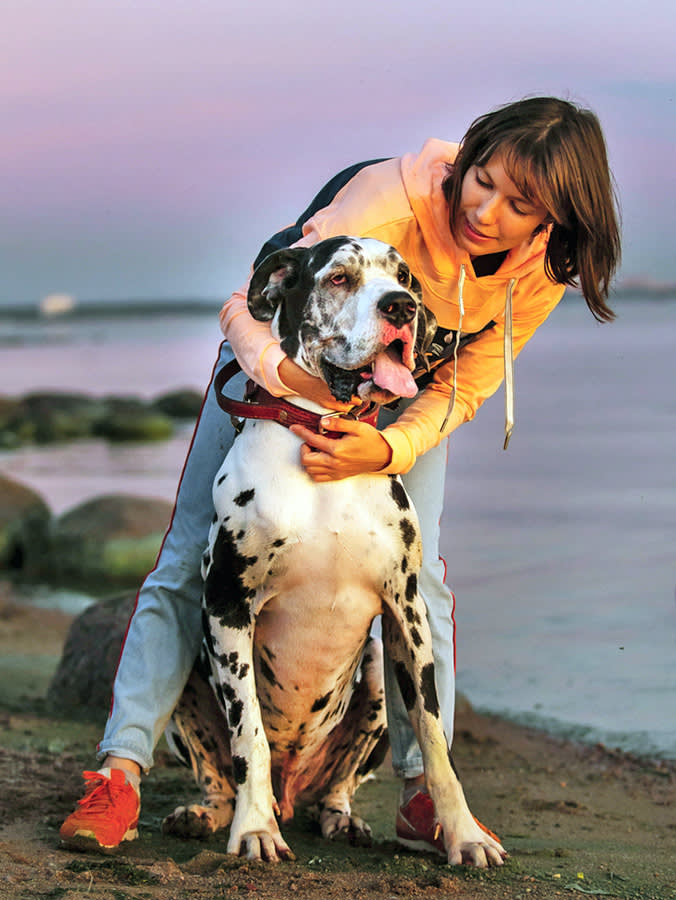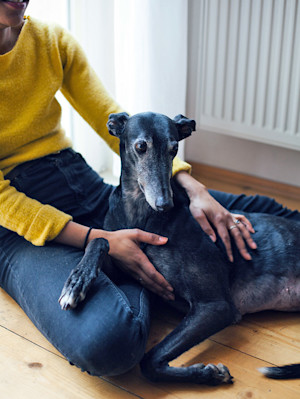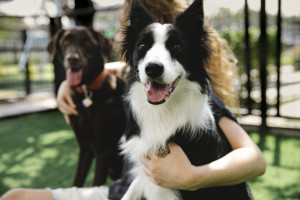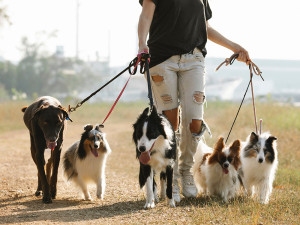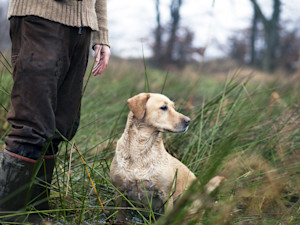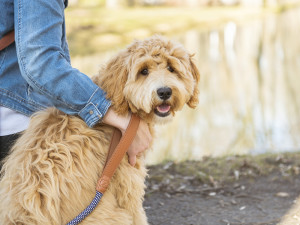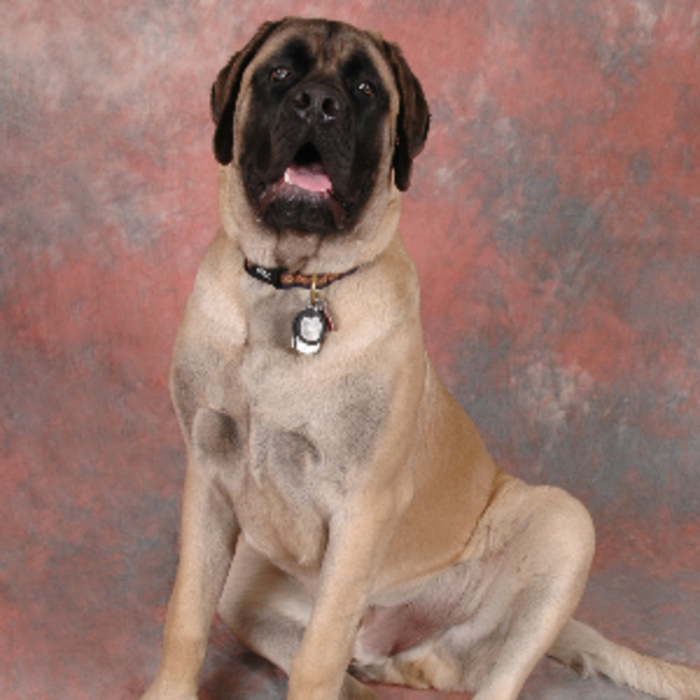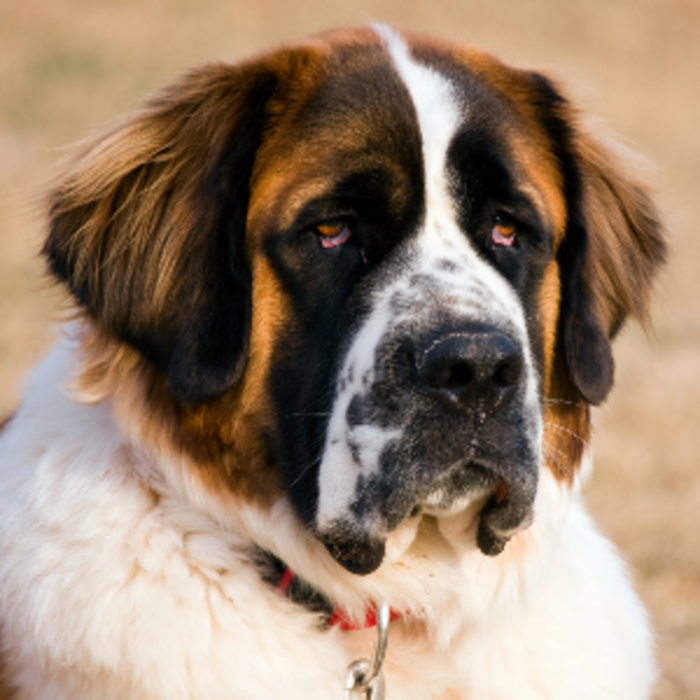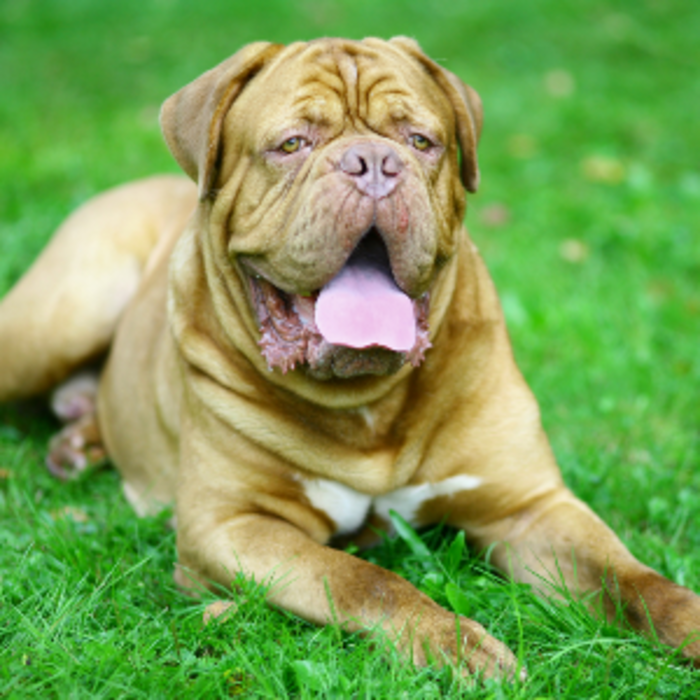Great Danes: The History and Origins of the Working Dog
Where did the Great Dane originate? Learn more about the history and genetic origins of this working dog
The Great Dane, dubbed the ‘Apollo of dogs’ in reference to the majestic Greek god of sunlight, is a German breed of large mastiff-sighthound belonging to the working dog group. The Great Dane is famously one of the biggest dog breeds in the world – so big, in fact, that it’s classed as a giant breed. While it isn’t the biggest dog of all – the Mastiffopens in new tab, Boerboelopens in new tab, Tosa Inuopens in new tab and Saint Bernardopens in new tab all have the potential to weigh more – the Great Dane’s size makes them instantly recognisable.
Know for their affectionate, gentle, easy-going and playful demeanour, the Great Dane experienced a boom in popularity in the UKopens in new tab between 1969 and 1980, thanks to everyone’s favourite animated gentle giant, Scooby Doo. In 1969 when the animation aired for the first time on television, the breed jumped by 24 per cent in popularity. Numbers then steadily increased and Great Danes enjoyed their peak in the UK in 1980, as the Scooby Doo and Scrappy Do spin off series first appeared on screen, with nearly 3,000 puppies registered that year. However, registrations of Great Dane puppies in the UK have plummeted by 69 percent since 1980, with just 865 registered in 2020, according to the Kennel Clubopens in new tab, who put this change down to pet parents current preference for smaller breeds as a result of an increase in busy lifestyles and city living.
But a love of Great Danes is still alive and well in the UK, thanks to institutions such as The Great Dane Clubopens in new tab, which was founded in 1883, and The Northern Great Dane Clubopens in new tab, which was founded in 1904, both of which continue to organise shows like The Great Dane Festivalopens in new tab (their next event is just around the corner on 3–4 August in Northampton).
Great Danes have a rich history that dates back centuries. Evidence from carvings in Egyptian tombsopens in new tab suggests dogs resembling the Great Dane have existed for thousands of years. However, modern Great Danes are believed to have come fromopens in new tab an Asian Mastiff-type dog brought to Germany by ancient Iranian nomads. So despite the name, the Great Dane is not from Denmark at all, hailing instead from Germany. In Germany, the Great Dane is actually called ‘Deutsche Dogge’, which means ‘German Mastiff’.
Great Danes were originally bred for guarding and hunting, specifically hunting boar in Germany during the 1500s, and they became officially recognised in England in 1893opens in new tab.
Why was the Great Dane originally bred?
The Great Dane was initially bred by German nobilityopens in new tab for two primary purposes: hunting and guarding. These roles required a dog of immense size, power and courage, so combining the genetics of a Mastiffopens in new tab (large and powerful) with a Sighthoundopens in new tab (a dog that hunts primarily with sight and speed) made perfect sense.
Great Danes were originally used to hunt wild boar for sportopens in new tab. Boars are typically very aggressive and so required a dog that could withstand their fierce attacks, and the Great Dane’s size and strength made it the perfect candidate for this task: they were trained to chase, catch and hold the boar until the hunters arrived.
In addition to their hunting prowess, Great Danes were also bred to protect estates and properties. Their intimidating presence alone was enough to deter potential intruders, while their loyalty and protective instincts ensured that they would defend their owners and properties fearlessly.
The breeding of Great Danes for these roles required a combination of physical attributes and temperament, leading to the development of the breed’s distinctive characteristics.
A brief history of the Great Dane
Genetically, all domesticated dogs are descended from wolvesopens in new tab. Domestication of wolves likely occurred between 1 0,000 to 16,300opens in new tab. By 4,500 BC, according to fossil remains, five distinct types of dogs existed: Mastiffs, wolf-type dogs, Sighthounds, pointing dogs and herding dogs. Early versions of both Mastiffs and Sighthounds, which make up a Great Dane, are thought to have been bred in Egypt up to 5,000 years agoopens in new tab.
Dogs resembling the Great Dane have appeared on Greek money dating back to 36 BCopens in new tab, while an illustration dating back to approximately 600 BC shows Assyrian huntsmen with Dane-like dogsopens in new tab. In 407 AD, German Gaul and part of Italy and Spain were invaded by an Asiatic people who brought with them powerful Mastiff-like dogsopens in new tab.
In the 16th centuryopens in new tab, the nobility in many countries of Europe imported strong, long-legged dogs of different sizes, including some Mastiff- and Greyhound-type dogs, from England and Ireland. The development of the Great Dane can be attributed to German nobility who required dogs that could protect their properties, assist in hunting expeditions and serve as a reliable guardian. Mastiffs capable of overcoming bears and wild boars were very admired in Germany at the time. Through a process of selecting breedingopens in new tab (choosing dogs with the desired traits), the powerful Mastiffs were crossed with Irish Greyhounds, and the result was the dog known today as the Great Dane.
Over the next few centuries, the breed was refined and developed further, with the breeding and development of the Great Daneopens in new tab taking place mainly in Germany due to the country’s vast forests and estates, which provided the perfect environment for hunting large game and required robust guard dogs to protect the land.
By the 17th and 18th centuries, the Great Dane had become a distinct breed with specific characteristics suited for its roles.
Genetic characteristics unique to the Great Dane
Great Danes typically have a noble and distinguished appearance characterised by a rectangular head, long neck and deep chest. However, some of these physical characteristics can lead to health problems, such as osseous-associated cervical spondylomyelopathy (OA-CSM), a specific form of ‘wobbler syndrome’, which is a neck problem that most often affects young Great Danes, according to the Royal Veterinary Collegeopens in new tab. Bristol Veterinary School also states that Great Danes can be predisposed to dilated cardiomyopathy (DCM)opens in new tab, which is a primary disease of cardiac muscle that results in a decreased ability of the heart to generate pressure to pump blood through the vascular system, and is thought to be a recessive genetic conditionopens in new tab.
The American Kennel Clubopens in new tab describes the Great Dane as follows: “The Great Dane combines, in its regal appearance, strength, and elegance with great size and a powerful, well-formed, smoothly muscled body. It is one of the giant working breeds, but is unique in that its general conformation must be so well balanced that it never appears clumsy, and shall move with a long reach and powerful drive. The Great Dane is a short-haired breed with a strong, galloping figure.”
Size
Great Danes are renowned for their extra-large size and often tower over the pet parents when standing on their hind legs. The Kennel Club breed standardopens in new tab dictates that Great Danes should be: “minimum height of an adult dog over 18 months: 76cm; bitches: 71cm. Minimum weight over 18 months: dogs: 54kg; bitches: 46kg.” However, Great Dane puppies, like all large and giant breed dogs, require special nutritionopens in new tab to prevent them from growing too quickly. Excessive growth can lead to musculoskeletal diseasesopens in new tab, such as dysplasia (abnormality of development), osteochondrosis (a condition affecting the joints) and hypertrophic osteodystrophy (a developmental disease that can cause lameness).
Over the years, the tallest living dog has typically been a Great Dane. Previous record holders include Gibsonopens in new tab, Titanopens in new tab, Georgeopens in new tab and Zeus. The UK was even lucky enough to be home to Freddyopens in new tab, who measured 7ft 5inches when standing on his back legs and was crowned the World’s Tallest Living Dog in 2016 by the Guinness Book of World Records. Hailing from Essex, Freddy was actually the runt of the litter and his pet parent Claire Stoneman told The Telegraphopens in new tab that she never expected him to grow so large. He sadly passed away in 2021 aged eight.
Muscular build and powerful frame
The Kennel Club also describes a Great Daneopens in new tab as, “Very muscular, strongly though elegantly built, with look of dash and daring, of being ready to go anywhere and do anything.”
Coat
According to the breed standardopens in new tab, Great Danes have short, dense and sleek coats that come in six colours: fawn, brindle, blue, black, mantle black (black and white with a solid, black blanket extending over the body) and harlequin (pure white underground with preferably all black patches or all blue patches, having appearance of being torn).
The Victorian explosion: Great Dane engineering
The 19th century saw significant changes in the breeding practices and roles of many dog breeds, including the Great Dane. Most dog breeds we recognise today were developed in the last 150 years, spurred by what’s become known as the Victorian Explosionopens in new tab. During this time in the UK, dog breeding intensified and expanded, resulting in many of our most recognisable breeds of dogs. The Victorians, influenced by the ideas of Darwinopens in new tab, became passionate about breeding for the ideal of a certain breed. So, the Victorian era played a crucial roleopens in new tab in shaping the modern Great Dane.
Just after the Victorian era, in 1921, a British businessman called Gordon Stewartopens in new tab created kennels especially for Great Danes at Send Manoropens in new tab in Surrey. At its peak, Send Manor housed over 500 Great Danes, with a short film being produced in 1930opens in new tab that showcased the dogs and the manor in all its giant glory.
Prior to the 19th century
Before the Victorian eraopens in new tab, Great Danes were primarily bred for their functional roles in hunting and guarding. Their physical and behavioural traits were geared towards these practical purposes, with less emphasis on uniformity in appearance.
Breeding for function
During the early 19th centuryopens in new tab, breeders continued to prioritise the functional aspects of Great Danes. They focused on enhancing the breed’s hunting abilities and protective instincts, ensuring that these dogs remained effective in their traditional roles.
Breeding for class
As the Victorian era progressed, there was a shift towards breeding dogs as symbols of status and classopens in new tab. Great Danes, with their impressive size and dignified appearance, became popular among the upper class in Britain, so much so that their likeness was even replicated in bronze decorative statuesopens in new tab. Breeders began to place more emphasis on the aesthetic qualities of the breed, leading to a more standardised appearanceopens in new tab.
Replicating ancient breeds
There was also a fascination with replicating and preserving ancient breeds during the Victorian era. Great Danes were often highlighted as modern representations of noble war dogsopens in new tab from antiquity, so this historical connection added to their appeal as status symbols.
Breeds with a similar history to the Great Dane
Several other dog breeds share a similar history to the Great Dane, having been bred for hunting, guarding or serving as status symbols.
Mastiff
An ancestor to many modern purebred dogs, the Mastiffopens in new tab has been around since 2500 BC. Caesar praised the Mastiffopens in new tab for its fighting ability in 55 AD, and Phoenician sailors introduced the breed to England in the 6th century.
The breed participated in blood sports, such as bear-baiting, bull-baiting, lion-baiting and dogfighting. Mastiffs also served in war. Legend has it that at the Battle of Agincourt in 1415opens in new tab (part of the Hundred Years’ War, that resulted in the victory of the English over the French), a Mastiff defended his wounded master, the English soldier Sir Piers Leghopens in new tab, for many hours until he was rescued. The dog returned to Legh’s home and was the foundation of the Lyme Hall Mastiffsopens in new tab, the breed’s oldest documented bloodline. An old stained glass window remains in the drawing room of Lyme Hall portraying Sir Piers and his devoted mastiff.
Irish Wolfhound
A breed born from the coursing hounds found in the Middle East and the large native dogs of Britain, the Irish Wolfhoundopens in new tab is a powerful and resilient hunter. Dating all the way back to ancient Antiquity, these dogs were used to hunt the ancient wild elkopens in new tab of Ireland.
As wolves became more of a nuisance in Ireland in the 15th century, Irish Wolfhounds became specialised in hunting them, which is where the name Wolfhound came from. Sadly, after the breed effectively hunted their prey to extinction, the Wolfhound fell out of use, and they almost went extinct as a breedopens in new tab.
Irish Wolfhounds were saved in 1862opens in new tab by a captain in the British army, George Augustus Graham. It became his primary ambition to save the breed, which he did by gathering all of the known living dogs he could find and breeding them.
Saint Bernard
The Invention of the Modern Dogopens in new tab, a book published by University of Manchester historians in 2018, shows that the much-loved Saint Bernard dog we know today was a Victorian invention. According to the book, the Saint Bernard today bears very little resemblance to the rescue dogs of the Swiss monks who lived on the Saint Bernard Pass, from which they are said to be descended.
The leading champion of the new Saint Bernard, defining its physical form after introducing them to Britain, was John Cumming Macdonaopens in new tab, a clergyman in Cheadle, near Manchester. Over half of the Saint Bernards in the first Kennel Club Studbookopens in new tab were from Macdona’s kennel, including the Prince of Wales’s dog Hopeopens in new tab. And Charles Cruft, who founded Crufts in 1886, was a great fan of Saint Bernards, making them the logo of his early showsopens in new tab.
Dogue de Bordeaux
An ancient French breed, the Dogue de Bordeauxopens in new tab was originally bred in the 12th century to be a hunting dog. Over the years, it’s also been used for guarding, herding, animal-baiting and dogfighting.
Initially, there were three types of Dogues: Toulousain, Parisian and Bordelais. The last of these is the ancestor of today’s Dogue De Bordeaux. The breed’s exact origins are unclear. A host of breeds, including various Mastiff- and Molossus-type guard dogsopens in new tab, likely contributed to the Dogue de Bordeaux as we know it today. In 1863, the breed officially earnt its name after winning a competition in the first canine exhibition at the Jardin d’Acclimatationopens in new tab in Paris. The first example of a Dogue de Bordeaux is thought to have arrived in the UK in 1897opens in new tab.
References
Ancient American dogs almost completely wiped out by arrival of European breedsopens in new tab
Toward understanding dog evolutionary and domestication historyopens in new tab
What Disorders Do UK Pedigree Dogs and Cats Really Acquire?opens in new tab
Presenting signs and clinical outcome in dogs with metaphyseal
osteopathyopens in new tabGenetic Welfare Problems of Companion Animalsopens in new tab
